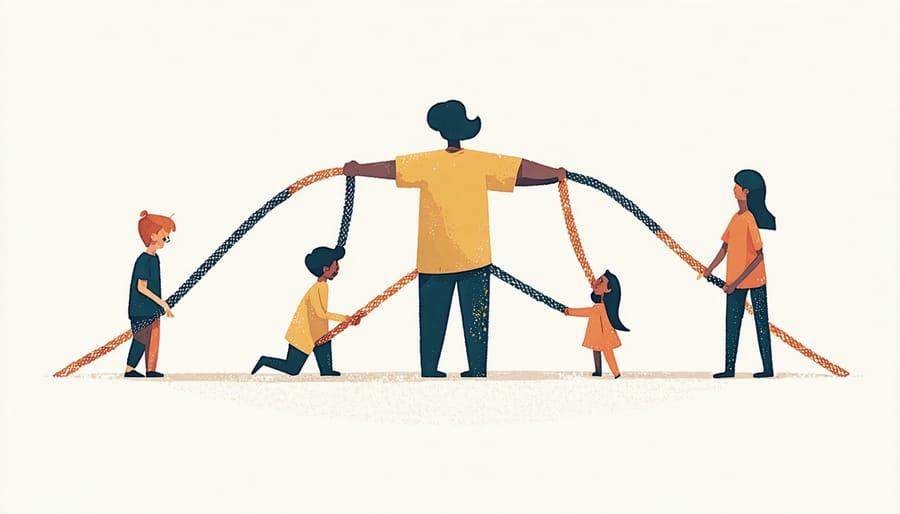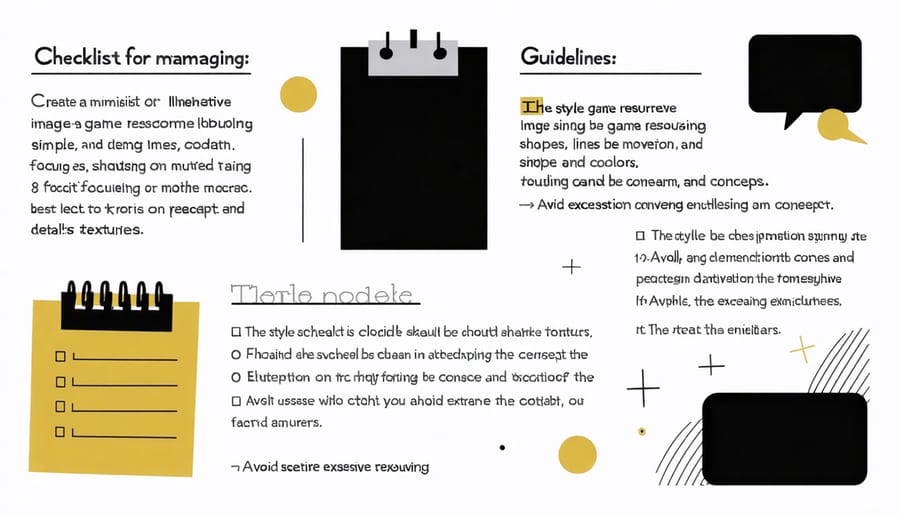Foster meaningful connections by incorporating classroom community games into your teaching toolkit. Initiate with ice-breaker games like “Two Truths and a Lie” to encourage students to open up and learn about one another. Implement collaborative problem-solving activities, such as team scavenger hunts, to build camaraderie and promote cooperative learning. Utilize role-playing scenarios to develop empathy and understanding, allowing students to step into different perspectives within the classroom environment. Conclude with reflection sessions where students can share their experiences and insights from these activities, reinforcing community bonds and enhancing engagement.
The Importance of Classroom Community Games

Building Social Skills
Classroom games are instrumental in fostering social skills necessary for students to thrive in collaborative environments. By engaging in structured play, students learn critical components of teamwork such as active listening, effective communication, and problem-solving. These skills are foundational for positive interpersonal interactions and collaborative projects. Games that require students to work together towards a common goal promote mutual respect and understanding, which are vital components of a harmonious classroom community. This approach not only enhances academic engagement but also contributes to the social and emotional well-being of students. For instance, incorporating role-playing activities can encourage empathy by allowing students to experience perspectives different from their own. By embedding these elements into daily routines, educators can create a dynamic learning environment that goes beyond traditional education, nurturing both intellectual and emotional growth. For more on the integration of these skills, explore our insights on social skills.
Enhancing Classroom Environment
Incorporating community games into the classroom setting significantly enhances the educational environment by fostering inclusivity and collaboration among students. These activities are designed to break down barriers, allowing students to engage with one another in a supportive atmosphere. For instance, games that require teamwork and problem-solving not only encourage cooperation but also help students develop communication skills and mutual respect. These interactions build a sense of belonging and safety, which are crucial for effective learning. Moreover, such an environment enables educators to address diverse learning needs, promoting equity and participation for all students. Evidence suggests that a collaborative classroom atmosphere positively impacts student engagement and motivation, leading to higher academic achievement and improved social skills. Through structured and intentional community-building activities, educators can create a vibrant and dynamic space conducive to learning.
10 Best Classroom Community Games
Game 1: Name Game
The Name Game is a simple and engaging icebreaker ideal for fostering connections among students in a classroom setting. Each participant takes turns introducing themselves by stating their name alongside a memorable fact or hobby, while also repeating the names and facts of the previous individuals. This game helps break down barriers, encouraging students to learn more about each other and enhancing their ability to recall names. It promotes inclusivity and communication skills, laying a foundation for a collaborative learning environment by making students feel recognized and valued.

Game 2: Human Knot
Human Knot is an engaging and interactive game designed to strengthen classroom community. Students stand in a circle and reach across to hold hands with two different people, creating a “knot.” The challenge is to untangle the knot without letting go of hands, fostering teamwork, problem-solving, and communication skills. Beyond these developmental advantages, Human Knot encourages social interaction and cooperation, helping students build trust and rapport with their peers. This game can be easily adapted to various age groups, making it a versatile tool for enhancing classroom dynamics.
Game 3: Silent Line-Up
Silent Line-Up is an engaging classroom game where students are tasked with arranging themselves in a specific order—such as by birthdate or height—without speaking. This activity encourages non-verbal communication, cooperation, and problem-solving skills. It promotes a sense of unity as students must rely on observation and gestures to achieve their goal. By fostering collaboration and developing empathy through active listening and understanding of non-verbal cues, Silent Line-Up effectively contributes to a positive classroom community where students feel connected and respected.
Game 4: Two Truths and a Lie
Two Truths and a Lie is an engaging activity that encourages students to share personal stories while honing their critical thinking skills. In this game, each student presents three statements about themselves, two of which are true, and one false. The class collectively engages in evaluating the plausibility of each statement, fostering analytical discussion and building a deeper classroom connection. This game not only sparks curiosity but also enhances active listening and communication, crucial elements for a collaborative learning environment in K-12 settings.
Game 5: Team Pictionary
Team Pictionary encourages collaboration and creativity among students of all ages by turning vocabulary into visual art. In this activity, students work in teams to draw and guess words or phrases, fostering teamwork and communication skills. The game also plays a vital role in education by enhancing cognitive abilities, as students must think critically to represent concepts visually and interpret their teammates’ drawings accurately. Implementing Team Pictionary in classrooms supports a positive learning environment, helping build a more cohesive classroom community and improving student engagement through interactive learning.
Game 6: Classroom Bingo
Classroom Bingo fosters engagement and sharpens observational skills by encouraging students to identify specific items or behaviors in their environment. Educators can tailor the bingo cards to include relevant topics, such as identifying positive behaviors or new vocabulary in use. This game promotes active listening and keen observation as students must focus on their peers and surroundings to mark off items on their cards. Through this interactive activity, students develop essential skills that contribute to a supportive classroom atmosphere, enhancing both individual growth and collective learning experiences.
Game 7: Story Cubes
Story Cubes is a dynamic storytelling game that enhances imagination and sequencing skills, vital for student engagement and creativity. Using dice illustrated with various images, students create narratives by linking the pictures. This exercise encourages active participation, flexibility in thought, and understanding of narrative order and structure. By fostering a sense of community in classrooms, students work collaboratively, respecting diverse ideas and perspectives. Story Cubes is ideal for all grade levels, allowing educators to adapt its complexity to suit their classroom’s needs, ultimately enriching the educational experience.
Game 8: Charades
Charades is a powerful tool for fostering communication and interpretive skills in the classroom. By engaging students in nonverbal expression and active listening, this classic game encourages teamwork and sharpens their ability to convey ideas without words. Implementing charades can enhance students’ empathy, as they learn to interpret emotions and narratives through body language. The game’s flexibility allows educators to tailor scenarios to various subjects, reinforcing curriculum content through interactive play. As an energizing activity, charades not only invigorates the classroom atmosphere but also strengthens community bonds and collaborative enthusiasm among students.
Game 9: Scavenger Hunt
Scavenger Hunt fosters an interactive environment where students collaborate to solve problems and achieve common goals. This activity involves students following clues that encourage critical thinking and teamwork, requiring them to communicate effectively and strategize as a group. By engaging with diverse elements in their classroom or school environment, students develop observational skills and build camaraderie. Scavenger Hunts can be tailored to different subjects, making them versatile tools for reinforcing curriculum content while promoting a sense of community and shared achievement among students. This encourages a positive, collaborative classroom atmosphere.
Game 10: Musical Chairs with a Twist
Musical Chairs with a Twist provides an engaging variation on the classic game, fostering both movement and collaboration among students. In this version, rather than being eliminated, students pair up and share remaining seats, promoting teamwork and inclusivity. Educational benefits include enhancing listening skills and encouraging creative problem-solving. To implement, designate a space, arrange chairs in a circle, and use diverse genres of music to maintain enthusiasm. This activity can effectively transition between lessons, reinvigorating focus and energy in the classroom while strengthening the community dynamic.
Tips for Successful Implementation
Adapting Games to Curriculum
Aligning classroom games with educational goals enhances student engagement and learning outcomes. First, identify the foundational knowledge and skills you aim to develop, such as critical thinking or teamwork. Select games that complement these objectives by encouraging relevant competencies. For instance, simulation games can foster problem-solving, while collaborative activities can enhance communication skills. Ensure the games are age-appropriate and assess their educational value regularly by gathering feedback from both students and teachers. Tailoring experiences to meet curriculum requirements not only reinforces academic content but also nurtures a cohesive classroom environment that supports diverse learning styles.
Managing Time and Resources
Balancing time constraints and equipment needs is crucial for effectively implementing classroom community games that foster K-12 engagement. Educators should plan activities during designated times, such as morning meetings or transition periods, to ensure they do not intrude on essential instructional minutes. Consider using low-resource games that require minimal materials, such as collaborative storytelling or icebreaker questions, to eliminate the need for extensive equipment. For games necessitating specific resources, utilize readily available classroom items or digital tools like educational apps. Strategically integrating these activities can enhance student connection without disrupting the overall learning schedule, ensuring a productive and cohesive classroom environment.

Conclusion
In conclusion, integrating classroom community games into K-12 education offers a significant positive impact on both student engagement and development. These games foster essential social skills such as teamwork, communication, and empathy, creating a more cohesive and supportive classroom environment. They also enhance educational outcomes by making learning more interactive and enjoyable, thus motivating students to participate actively. Educators are encouraged to incorporate these activities into their teaching strategies, as they represent a valuable tool in nurturing students’ academic and personal growth. By prioritizing community-building games, stakeholders can contribute to a more dynamic and inclusive educational experience.
